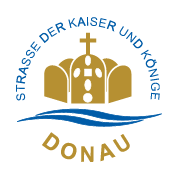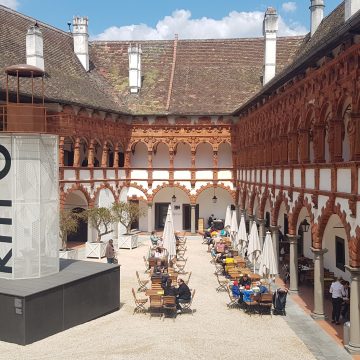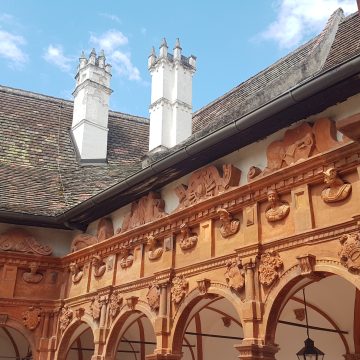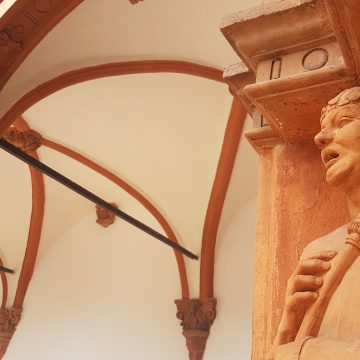DONAU. people, treasures & cultures
DONAU. people, treasures & cultures - from the Black Sea to Schallaburg Castle
On June 1, the new exhibition at Schallaburg Castle in Lower Austria opened its doors: "DONAU - People, Treasures & Cultures" is its theme, and its itinerary is a bit unusual for us visitors. For the exhibition does not follow the direction of the Danube's flow, but sends us "against the current" - just as the river's unusual kilometer markings do. For the Danube begins its river kilometer count with kilometer zero in Sulina: where the Danube flows into the much-cited Black Sea, there our journey begins westward along the river to the Renaissance castle of Schallaburg in the Melk Alpine foothills in the Mostviertel. Why do we travel so decidedly against the tide in terms of exhibition?
Curator Domink Heher explains, "The journey against the current is intended above all to make clear that a river is not a one-way street: exchange has always taken place in both directions... The exhibition journey from Sulina to the Wachau is intended to inspire visitors to explore the Danube region beyond the walls of Schallaburg."
We are happy to do so, but first we enter the beautiful new visitor portal of Schallaburg - the parking lot is already well filled on the first day of the exhibition, 1.6.2020 in the morning. After the weeks of exit restrictions thanks to the Corona Virus, we too are hungry for culture and eager to hear the stories behind the Danube, the landscapes and the people in the Danube region.
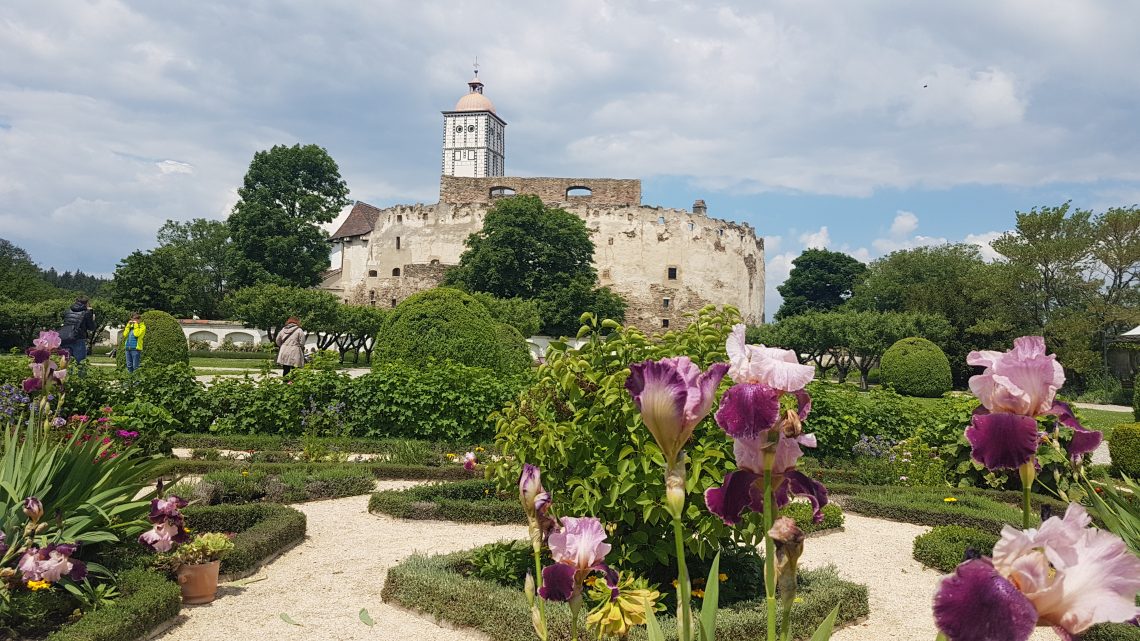
This is the title of the exhibition's yellow travel guide - Which Danube countries have I already been to? There are 10 countries, can you name them all at once? Not us, they are: Romania, Ukraine, Moldova, Bulgaria, Serbia, Croatia, Hungary, Slovakia, Austria and Germany. Video screens with stories of people and their professions on the Danube, of tourist regions, of culture and culinary delights, and sometimes also "border-value" stories about vanished islands, past cultures and displaced peoples accompany us throughout the exhibition.
The kids, on the other hand, are picked up in a completely different way: Also multimedia-based, but also haptic: Small caves to crawl into and explore, they listen to the pine marten, the white-tailed eagle and the swans, who chat about their habitat and their everyday animal life: So funny and appropriate for children and with such funny texts that I sometimes prefer to listen to the children's version of the background stories instead of staying in front of the video screens. The texts are written, among others, by the well-known and award-winning children's author Lena Raubaum, who is also responsible for the animal voices - you can also listen to them online. Dino is the scattered Danube crested newt, Serban the sea eagle and the swans are called Pavol and Paul - they have known their Danube for centuries much better than we humans and reveal their little secrets to the children. Or did they know that a nose is a fish? Exactly, Nele Nase just has the nose in front.
But then there is surprising information and exhibits that have never been seen in Austria before and which then demand my full attention. For example, that 20 million years ago the Danube still flowed westward - now it flows eastward. It has no source of its own and has experienced 450 real big floods between 1012 and 2013. From 1768, Nikolaus Ernst Kleemann traveled 2000 kilometers on the Danube from Vienna to the Black Sea and wrote down his experiences in a diary, which was published in 1783 with the somewhat unwieldy title "Tagebuch der Reisen von Wien auf der Donau bis an das schwarze Meer, dann zu Land durch die Butschiak- und Nogemtartarey in die Krim, von dort über das schwarze Meer nach Constantinopel und Smyrna und durch den Archipelagum, den Golf di Venezia über Triest nach Wien zurück. In the years 1768, 1769 and 1770, together with an appendix of the special curiosities of the Crimean Tartarey and tested drafts of the plot to the Levant" was published as a printed work and is now only available in selected antiquarian bookstores.
Did you know that the Danube Delta with its pelicans near Sulina is somewhat larger than the Mostviertel and that there was a "little Vienna" in Romania with the town of "Bulg" - there, for the first time in the history of photography, a person was depicted in a photograph and the exhibits on display are indeed reminiscent of villa life at the Semmering at the turn of the century or of intérieurs of the palaces on the Vienna Ringstrasse.
Or have you heard of the Ottoman Danube island, Turkish enclave and once romantic getaway Ada Kaleh in Romania (previously annexed by the Habsburg monarchy) - where 25,000 people were relocated to make way for a power plant and which eventually sank into the Danube in 1971?
And - do you know the Trajan's Bridge over the Danube at Drobeta Turnu Severin in Romania, which was completed by Emperor Trajan as early as 105 AD and was the first permanent bridge over the lower Danube? It is still considered a structural masterpiece today - at the time, it was the longest bridge in the world at over 1 kilometer. And that the Danube was partially overfished already in the 19th century is a sad certainty. But the famous fish soup, the Halaszle - you know it for sure, don't you? Baja in southern Hungary is its secret capital and its production has been documented since 1800: And namely, at that time they used the "bell pepper from India" - the paprika, as a herbal book from 1609 from the Melk Abbey Library knows. But you'll have to find out for yourself where the cradle of Europe lies!
Nagymaros on the Danube Bend (the "Hainburg of Hungary") - but you are undoubtedly familiar with it, at least if you have heard news in the 1970s, keyword Gabcikovo. There is also the famous and touristically sought-after "Danube Bend" near the seat of the kings of Visegrád, not for nothing a very charming vacation destination on the border between Slovakia and Hungary. There, near the former royal palace, is also the "Montmartre on the Danube" Szentendre, together with Esztergom excursion destinations ex Vienna, which still have a little touch of a real insider tip. But they do not have it from me, I was already there decades ago!
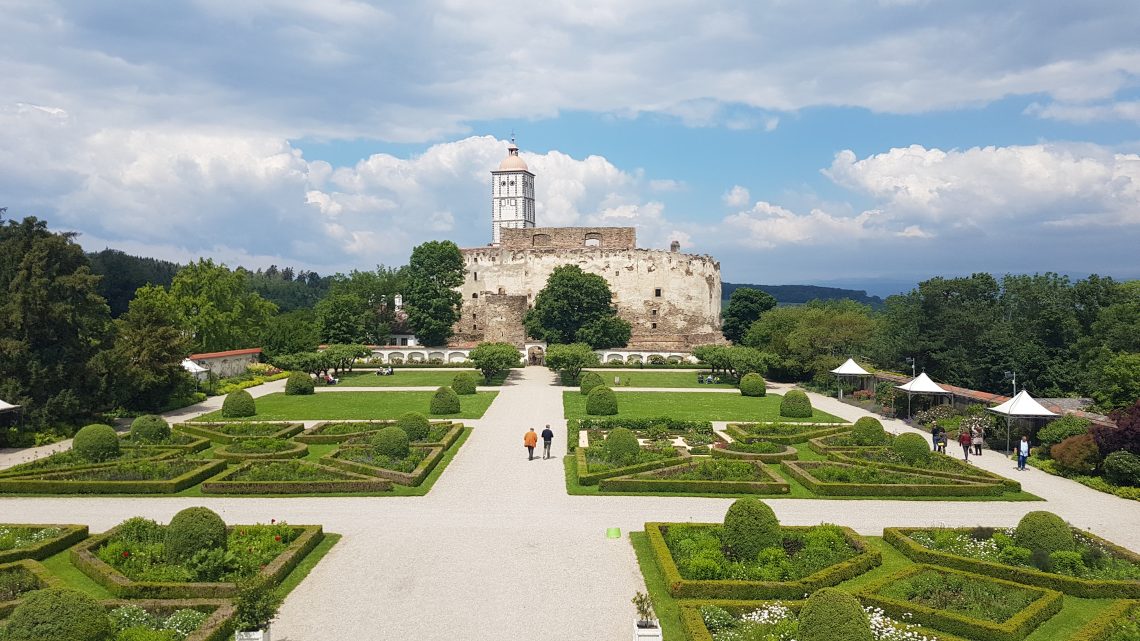
In Bratislava we have almost landed in Austria and thus at the end of our journey in the Schallaburg. Austria because Bratislava was the capital of Hungary for a long time and thus an important site of our double monarchy. So important, in fact, that from 1914 onwards a locomotive ran at 60 km/h between Vienna and Bratislava - a daring mix of Bim and streetcar. The exhibition also tells us about the ice storms that once threatened Vienna, which were countered with "floating gates" and "barrage ships" along the Danube Canal. This brings us finally to the "beautiful blue Danube", as we Eastern Austrians know it from the Johann Strauss son waltz of the same name. Via the Wachau, to which as one of the last free-flowing sections of the Danube a beautiful part of the exhibition is still dedicated, we reach the treasure of the Nibelungs and finally the Melk Alpine foothills at Schallaburg Castle.
By the way, the title "On the beautiful blue Danube", as we know it today from the Danube Waltz, is probably taken from a poem by Isidor Beck from Baja - but he probably used it to describe the Danube in southern Hungary. But that doesn't bother us, because firstly, it was never blue anywhere and secondly, we know now at the latest:
There is no such thing as the ONE Danube.
Danube. People, Treasures & Cultures. From the Black Sea to Schallaburg.
- Schallaburg Online
- Exhibition duration 1. 6. 2020 - 8. 11. 2020
- Recommended: Online purchase of tickets with time slot
- Guided tours also bookable online, duration 75 minutes
- Family program & family tours (60 minutes)
- Audio stories for kids
- Well sorted store with many book ideas
- Dogs forbidden in the whole area, also outdoors
- Schallaburg Restaurant with beautiful café in the courtyard
- For all who have to wait outside with dog: Three circular hiking trails around Schallaburg Castle
- Stop at Gasthaus Kraus (dogs welcome) with a beautiful garden near the pilgrimage church Steinparz.
- Excursion to the Pielach valley - for river bathing or for "nature in the garden
- Melk Abbey
- Wonderful hiking - the Danube region
